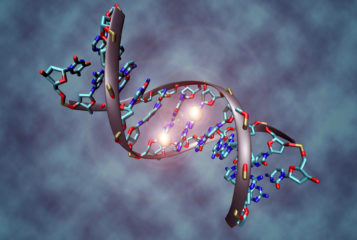Danish researchers have identified that weight gain and loss can result in different epigenetic markers in sperm, suggesting a possible explanation for why children of obese fathers are more prone to obesity themselves.
In the study, published in the journal Cell Metabolism, researchers from the University of Copenhagen analysed epigenetic markers in sperm obtained from ten obese men and 13 'lean' men. They found differences in the methylation status of more than 9000 genes, many of which are linked to appetite control, metabolism and brain development.
To investigate whether epigenetic signatures in sperm from obese men could be changed by weight loss, the researchers then analysed the sperm of six men about to undergo gastric bypass surgery, from samples provided before, one week and one year after the procedure.
The results showed that one week after surgery, the methylation status of 1509 genes had changed, suggesting that the epigenome of sperm can be rapidly altered. One year after surgery, 3910 genes were differentially methylated compared to before the operation.
'Our research could lead to changing behaviour, particularly pre-conception behaviour of the father,' says Professor Romain Barrès, senior author of the study from the University of Copenhagen. 'It's common knowledge that when a woman is pregnant she should take care of herself. But if the implication of our study holds true, then recommendations should be directed towards men, too.'
The authors have not yet determined whether the epigenetic markers seen in sperm are passed on to offspring, however. The next step is to compare the sperm epigenome of obese fathers to the epigenomes of their children via blood tests.
Some scientists have cautioned against drawing firm conclusions from the findings, as the sample size is small and genetic differences between the men could account for the differences observed.
Professor Gilean McVean from the University of Oxford, who was not involved in the study, told Science that obese and lean men are likely to have different epigenetic patterns throughout the body and 'whether the sperm differences have any functional consequence for children is an entirely different matter.'
Professor Allan Pacey from the University of Sheffield said, 'Until we know more, would-be parents should just aim to be as healthy as possible at the time of conception and not be drawn to faddy diets or other activities in order to try and influence the health of their children in ways we don't properly understand.'






Leave a Reply
You must be logged in to post a comment.